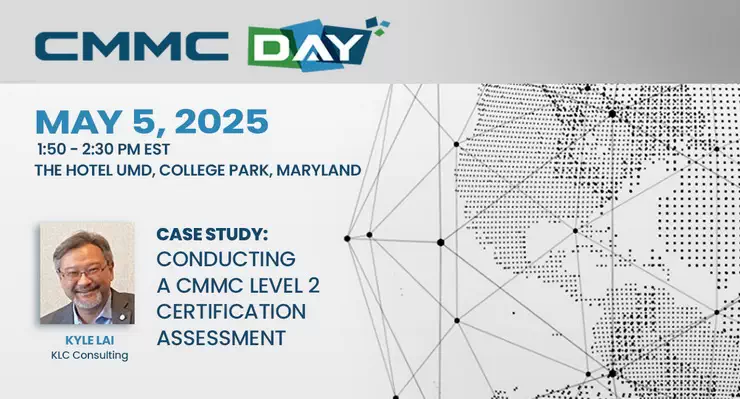
A Guide for DIB Companies
Introduction to NIST 800-171 and CMMC Compliance for DIB Companies
For companies in the Defense Industrial Base (DIB), understanding and implementing the 14 domain families of NIST 800-171 is not just about meeting a regulatory requirement; it’s about safeguarding national security interests. With CMMC Level 2 compliance becoming a standard for DIB companies, navigating these domains can be challenging without the right expertise. At KLC Consulting, we specialize in providing CMMC compliance consulting and assessment services to guide you through this critical journey.
The 14 Domain Families
| Domain Family | Description |
| Access Control (AC) | The controls put in place to grant or deny user access to networks and systems and to the information that resides on those networks and systems. |
| Awareness and Training (AT) | Awareness ensures that users know the security risks associated with using networks and systems and are aware of all applicable cybersecurity guidance. Awareness ensures users can recognize information system security concerns and respond accordingly. Training refers to the content and frequency of an organization’s cybersecurity training and the efforts to ensure that all users attend the training. |
| Audit and Accountability | Audits are independent reviews and examinations to assess the adequacy of information system controls. Accountability is the principle that a user is trusted to safeguard and control information and must answer to the proper authority for the loss or misuse of the information. |
| Configuration Management | The process to document, review, and agree to baseline configuration settings and to maintain those settings over time and update the configuration settings based on security risks. Configuration settings are the parameters in software, hardware, or firmware that affect a system’s security posture or functionality. Settings can be defined in servers, workstations, input, and output devices and include settings for firewalls, wireless access points, sensors, and routers. |
| Identification and Authentication | The process of establishing and authenticating the identity of users that interact with networks and systems before granting access to the networks and systems. |
| Incident Response | The efforts to identify, report, analyze, contain, and mitigate internal or external network and system breaches or violations of security policies and recommended practices. |
| Maintenance | The activities to either prevent the failure or malfunction of networks and systems or to restore their operating capability. The activities include controls on the tools, techniques, and personnel used to conduct maintenance, as diagnostic equipment and other maintenance tools could be potential vehicles for introducing malicious code into a system. |
| Media Protection | The process of restricting access or physically controlling media to ensure accountability, restricting mobile devices capable of storing and carrying information into or outside of restricted areas. Media includes, but is not limited to, removable hard drives, flash drives, compact disks, and paper. |
| Personnel Security | The practice of assessing individuals’ conduct, integrity, judgment, loyalty, reliability, and stability for duties and responsibilities requires trustworthiness. |
| Physical Protection | The practice of protecting and monitoring the physical facility and support infrastructure for networks and systems. |
| Risk Assessment | The process of identifying risks to organizational operations, assets, individuals, other organizations, and the Nation, resulting from the operation of networks and systems. |
| Security Assessment | The testing or evaluation of security controls to determine whether the controls are implemented correctly, operating as intended, and producing the desired outcome to meet the security requirements for networks and systems. |
| System and Communications Protection | The process of protecting the confidentiality and integrity of information at rest and in transit through physical and logical (automated) controls. |
| System and Information Integrity | The practice of monitoring networks and systems for security alerts, taking appropriate actions to address the alerts, and providing protection against malicious code. |
Conclusion
NIST 800-171’s 14 domain families form a comprehensive framework for protecting CUI in non-federal information systems and environments. Adherence to these requirements is crucial for organizations handling sensitive information, particularly those involved in federal contracts.
For more detailed information on each domain, contact our expert team for guidance and support in implementing NIST 800-171 requirements.
Why DIB Companies Need CMMC Compliance Consulting
Implementing the NIST 800-171 domains can be complex, and achieving CMMC level 2 compliance adds another layer of challenge. DIB companies often require the expertise of a C3PAO caliber consultant like KLC Consulting for guidance. We not only assist in understanding these domains but also provide practical steps and strategies for effective implementation.
Contact KLC Consulting for Expert CMMC Compliance Assistance Don’t navigate the complexities of NIST 800-171 and CMMC compliance alone. Contact KLC Consulting for expert guidance and support. Our CMMC compliance consulting and assessment services are tailored to meet your unique needs and ensure you’re fully prepared to meet these critical standards.
"*" indicates required fields




